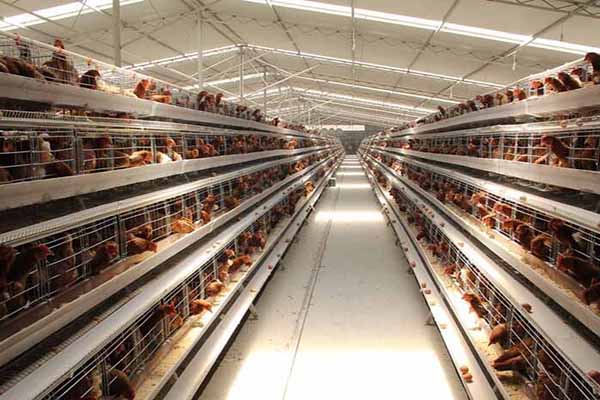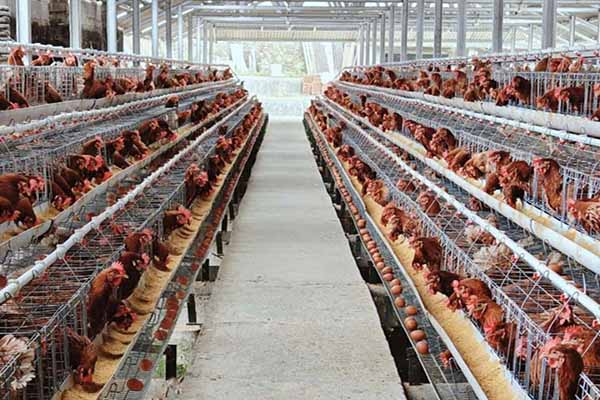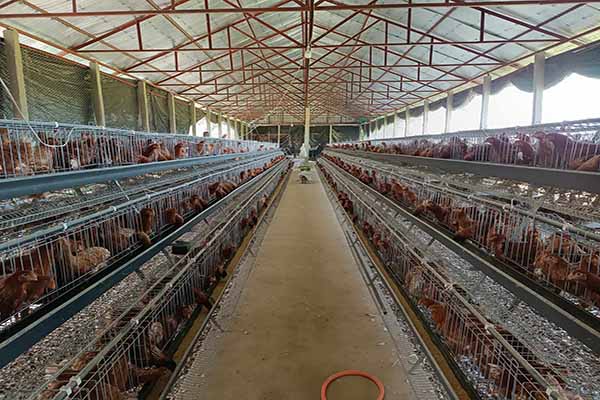Poultry Farm Construction and Design Guide
Time : 2025-06-30
Constructing and designing a poultry farm is a complex process that requires careful planning and consideration of various factors. This guide aims to provide a comprehensive overview of the key aspects involved in poultry farm construction and design, ensuring that your operation is efficient, cost-effective, and sustainable. By incorporating the latest technologies and professional insights, this guide will help you create a poultry farm that meets the highest standards of productivity and animal welfare.

Introduction to Poultry Farm Construction and Design
Poultry farming is a vital industry that provides a significant source of protein for the global population. The construction and design of a poultry farm play a crucial role in the success of the operation. Proper planning can lead to better animal health, increased productivity, and improved economic returns. This guide will cover the essential elements to consider when constructing and designing a poultry farm.
Site Selection and Preparation</h 2>
2>
The first step in constructing a poultry farm is to select an appropriate site. The following factors should be considered:
- Location: Choose a location that is accessible for supplies and labor, but also distant from residential areas to minimize noise and odor issues.
- Climate: Consider the climate of the region to ensure that the farm can withstand extreme weather conditions. Poultry require a controlled environment to thrive.
- Topography: The land should be level and well-drained to prevent flooding and standing water, which can lead to disease.
- Water Resources: Ensure a reliable water supply for drinking, cleaning, and irrigation purposes.
- Electricity: Access to a stable electricity supply is crucial for farm operations and equipment.
Once the site is selected, it should be prepared by clearing vegetation, leveling the ground, and establishing proper drainage systems.
Building Design and Layout
The design of the poultry farm should be based on the specific type of poultry being raised, the production goals, and the local climate. The following elements should be considered in the building design:
- Structure: The building should be constructed from durable materials that can withstand the elements and provide a secure environment for the birds.
- Insulation: Proper insulation is essential to maintain a consistent temperature inside the poultry house, reducing energy costs and improving bird health.
- Ventilation: Adequate ventilation is crucial for controlling ammonia levels, temperature, and humidity, which are critical factors in bird health and productivity.
- Lighting: Natural light should be maximized during daylight hours, and artificial lighting should be used to simulate natural photoperiods and encourage egg production.
- Manure Management: Design an efficient manure management system to handle waste and prevent odor and environmental contamination.
The layout of the poultry farm should be designed to optimize workflow and minimize the spread of disease. The following considerations should be taken into account:
- Isolation: Separate different age groups or types of poultry to prevent the spread of disease.
- Sanitation: Design the farm with easy access for cleaning and disinfection to maintain a healthy environment.
- Accessibility: Ensure that all areas of the farm are easily accessible for maintenance and management.
Equipment and Technology
The selection of eq uipment and technology is a critical component of poultry farm construction and design. The following are some key considerations:
uipment and technology is a critical component of poultry farm construction and design. The following are some key considerations:
- Feeding Systems: Automated feeding systems can improve efficiency and reduce labor costs.
- Watering Systems: Ensure a continuous supply of clean water with automated watering systems.
- Environmental Control Systems: Utilize advanced control systems to monitor and adjust temperature, humidity, and lighting.
- Health Monitoring: Implement monitoring systems for early detection of diseases or health issues.
- Manure Handling: Invest in efficient manure handling systems to manage waste effectively.
It is important to choose equipment that is compatible with the farm’s design and meets the specific needs of the poultry being raised.
Regulatory Compliance and Safety
Compliance with local regulations and safety standards is essential for the successful operation of a poultry farm. This includes obtaining necessary permits, adhering to biosecurity protocols, and ensuring that the farm is equipped with emergency response systems.
Conclusion
Constructing and designing a poultry farm is a complex task that requires careful planning and consideration of various factors. By following this guide, you can create a poultry farm that is efficient, cost-effective, and sustainable. Incorporating the latest technologies and professional insights will help you meet the highest standards of productivity and animal welfare.











